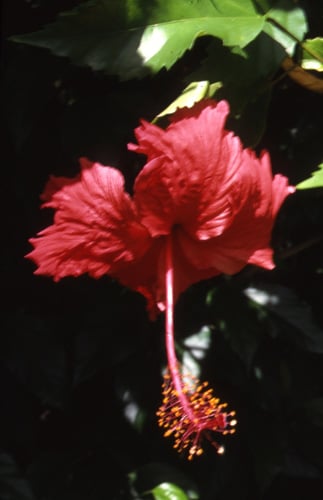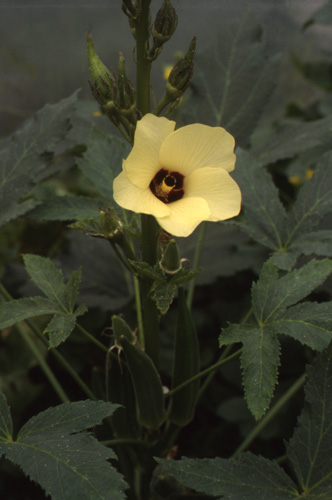Of all the flowers to grow in a greenhouse Hibiscus rosa-sinensis are probably the most imposing. If you’ve ever been lucky enough to have a tropical vacation you will have noticed hotels often have table displays of hibiscus flowers.

The reason they’re so often used for cut flowers is their endurance as unlike most other blooms in such heat hibiscus do not flag and if cut in the morning still look good that evening. We can easily grow some of these showier, often bright crimson, varieties under cover which give much bigger more luscious blooms than our humbler just hardy garden hibiscus. Some are even sold as houseplants. Not difficult these thrive in any well drained leaf mould rich compost. They need to be kept frost free but do not like it too warm, dim and damp as this promotes mould preferring a cool bright place much like citrus. With light feeding and regular watering their only drawback is they may become a tad large and need cutting back (best done in late winter just before growth re-commences).
Closely related are the Abutilons, also good greenhouse subjects, with another range of flower colours, and many with variegated leaves. But there are other relations that have an economic, and better still, some with an edible aspect. Cotton, Gossypium, is an interesting plant, a short lived perennial looking somewhat like a dwarf hollyhock or mallow with yellowish flowers, these swell into seedpods bursting with the masses of lint stuffing them. But far more interesting to the gardener come gourmet is Okra, this is a true Hibiscus, H. esculentus. The plant is an annual much resembling ordinary mallow, it can be started off in spring with warmth and grown on, again with warmth, much like a chilli pepper or greenhouse tomato. However although needing more warmth than them it does not need such rich soil, nor heavy feeding and watering as with most greenhouse crops.

The yellow flowers are soon followed by finger like green pods, the part we use. Sometimes fried as a dish on their own these are more often included in other dishes for the mucilage they contain which thickens a sauce and is especially popular in such as gumbos. The only drawback with this crop is you need about a half dozen plants or more to ensure you have enough fresh and not over-ripe pods ready all together. The seeds have also been used to make a coffee substitute. But even more exciting, and decorative, is Hibiscus sabdariffa subvariety sabdariffa, the Roselle or Indian Sorrel. This has darker leaves, often stained purple and modest reddish purple or white flowers. It is the thick fleshy sepals and calyces that are used as these have a delicious flavour making exquisite jellies, tarts -and beverages.
Indeed grown from a late winter sowing these bloom in autumn and are brilliant for making winter drinks, toddys and teas- for these taste of cloves, nutmeg and cinnamon.










